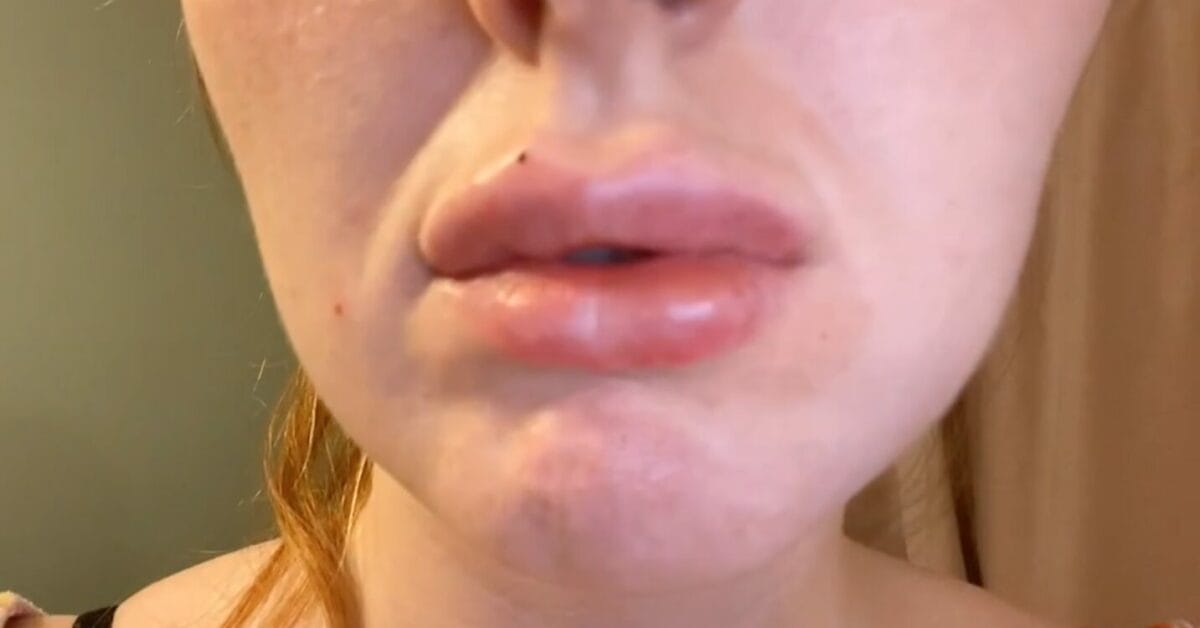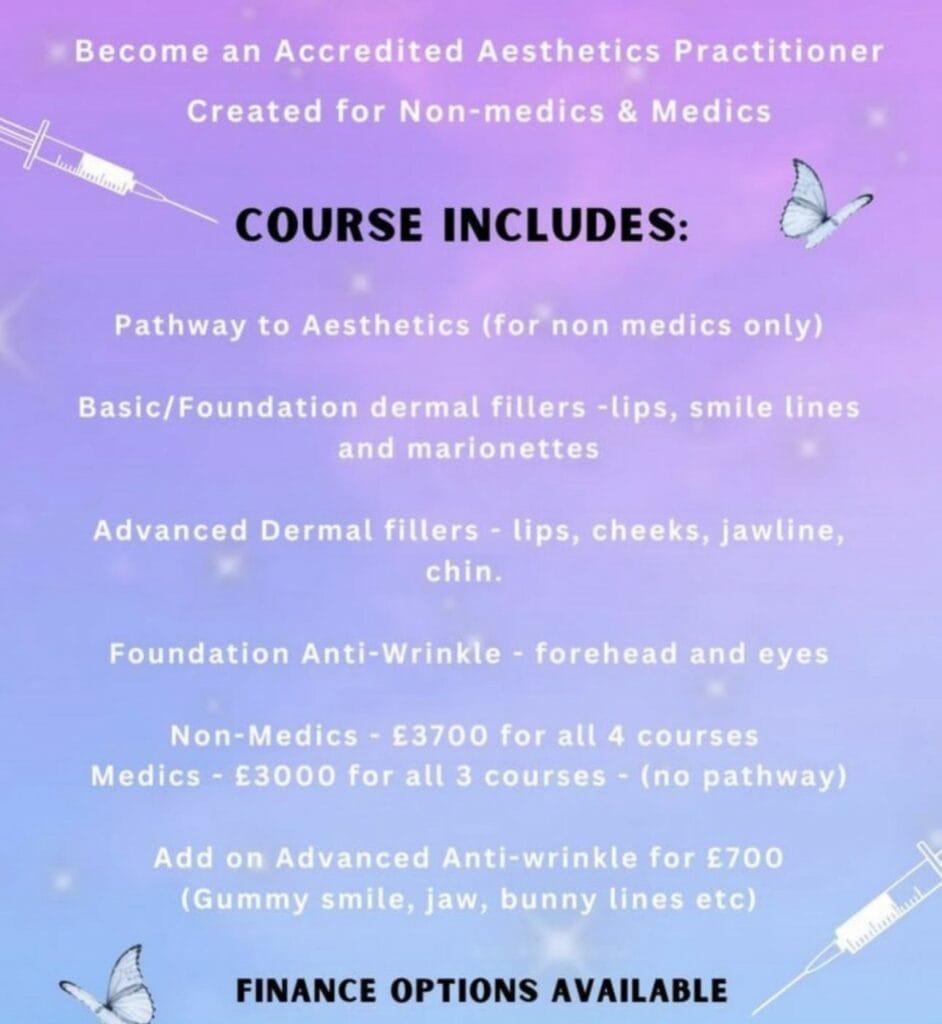Women have been left physically and mentally scarred after dermal filler complications, The Ferret has found as part of an investigation into the lack of regulation on non-surgical beauty treatments.
Dermal fillers are substances injected into people’s faces to fill lines and wrinkles, and add volume to lips and cheeks. The fillers have become increasingly popular in recent years and – according to a government-approved register of accredited practitioners called SaveFace – are almost as normal as “someone getting their nails done”.
But complications from dermal fillers are common and include allergies, bleeding, bruising, swelling, infection, and even blindness. SaveFace received almost 3,000 complaints in 2022, with over two-thirds relating to dermal fillers and almost a quarter relating to botulinum toxin (botox), an injection which relaxes face muscles to smooth out lines and wrinkles.
The Ferret spoke to one woman who suffered severe swelling to her lip after too much filler was injected. She ended up depressed and unable to leave her home. Another woman said she was given incorrect advice regarding a lump that appeared on her lip.
Professional bodies said they had dealt with thousands of cases where people had developed complications, including serious ones. In one case a woman lost her eyesight. In others, people had developed allergies or other adverse reactions to the treatment.
We discovered two-day courses advertised online, with minimal training offered to students without a medical background, who were then able to practice dermal treatments without further regulation.
The Ferret’s investigation into dermal fillers is part of a new partnership with Stirling University, whereby Ferret reporters mentor post-graduate journalism students. You can help us support more budding journalists with a one-off donation or by becoming a member of The Ferret.
Currently anyone in the UK can access training to administer dermal fillers with no higher medical qualification, and no experience is required to become a practitioner in the aesthetic field.
The Scottish Government promised to introduce regulations in 2022 but there has been no progress to date, meaning these high-risk procedures continue to be performed by people without proper training.
Campaigners are urging the Scottish Government to better regulate the industry. Their calls follow reports that under-18s in England are dodging a ban on them having botox and lip filler, by travelling to Wales, Scotland and Northern Ireland to undergo the procedures, where no such law exists.
What are dermal fillers?
Most dermal fillers used in the UK contain a natural substance called hyaluronic acid. The cost can range from £200 to around £500, depending on the type of product, the number of syringes used, and the complexity of the area being treated.
Having dermal fillers is usually safe if done by an experienced and suitably qualified person, but official advice is to avoid practitioners who have only completed a short training course.
Botched jobs on the rise
Complaints to SaveFace rose from 934 in 2017 to 2,824 in 2022, with complaints about dermal fillers – mostly about lip fillers – rising from 616 to 1,948. Complaints about botox also rose – from 224 in 2017 to 1,300 in 2022.

Current UK legislation
Issues within the industry were first highlighted in April 2013 by Sir Bruce Keogh, a British surgeon who was national medical director of the NHS commissioning board.
His report claimed those undergoing non-surgical procedures have “no more protection and redress than someone buying a ballpoint pen or a toothbrush”.
After banning under 18s from getting dermal fillers and botox in England the previous year, the UK Government announced plans in 2022 to introduce licensing for those administering injectables, and there was a consultation in England which closed in October 2023.
The majority of responses to a 2022 Scottish Government consultation agreed change was needed, with 98 per cent of 437 responses backing further regulation.
Last July, the Scottish Government said it would consider regulating the administration of dermal fillers and that its “ultimate goal” was to ensure all cosmetic procedures are carried out hygienically and safely. It told The Ferret it wants to introduce “secondary legislation to enable Health Improvement Scotland (HIS) to regulate independent healthcare services, including non-surgical cosmetic procedures”.
Social media adverts for dermal filler
As well as reality TV, social media has played a huge part in making the aesthetics industry more popular, particularly influencer celebrities such as the Kardashians.
Kim Kardashian has had botox, and Khloe Kardashian said plastic surgery should be like makeup. Each sister has over 100 million followers on Instagram.
The reality TV show, Love Island, has also had an impact, according to SaveFace. Most contestants on the show are under 30 and have openly admitted to having “tweakments”, such as dermal filler.
Statista, a German online platform that gathers data, reported there were over 40,000 searches per month in 2021 for lip fillers, highlighting demand in the UK. Research by The Mental Health Foundation in 2019, found that one in three teenagers did not like how they looked and one in five adults felt disgust towards their looks.
The Ferret also found outlets offering “bargains” and “flash deals” for procedures on social media platforms including Instagram and Facebook. This does not break any laws or guidelines.

Aesthetic training
We spoke to people who had paid experienced technicians for procedures, including one woman who said the beautician had a nursing background and eight years’ experience.
She experienced complications, was unable to get a response and sought help in a support group where she found its 700 plus members all had experienced complications.
We looked at 10 training courses and found that practitioners can also offer treatments after having as little as two days’ training despite paying £2,000 to £4,000 for courses lasting just a few days.
The so-called “training academies” advertise that there is “no experience required” to become a qualified practitioner, and The Ferret was told students get limited practice of injecting dermal fillers on models before they can become licensed. Some courses do not include teachings on complications involved with administering filler, and some training is provided by non-medics who have received the same training that they then offer to others at a higher cost.
One online review of a course read: “While there were plenty of models, most had been obtained almost at the last minute. As learners we had the opportunity to inject however it was five of us injecting into the same model!”
Another reviewer said: “We didn’t have an opportunity to individually assess and treat the patient as a practitioner supervised by the trainer. Looking back, it must have been horrendous for one gentleman who left with his entire forehead full of injections completed by six different clinicians,” another reviewer said.
I didn’t want to leave the house as I should have been going to work.
Jackie, 23
Someone on a different course wrote: “Medical history taking was poor and I saw no evidence of either written consent to treatment or a written health questionnaire completed by patients.”
“Avoid this establishment, it’s all about making money and getting as many through the doors as possible to increase profitability.”
“I had to find another foundation filler course after training here as I was so unprepared and untrained. Very upset and really wish I hadn’t gone here.”
Ashton Collins, director of SaveFace, said the organisation had helped over 15,000 people whose procedures had gone wrong over the last decade, including those with “really serious complications”. She added: “The person feels they look awful as a result of it. We’ve had a lady who’s lost her eyesight through a dermal filler gone wrong.
“The reality is, legally you don’t need any training. If you felt inclined to, you could set yourself up as a practitioner, pretend that you’ve been on a training course or not, and start offering these treatments to the public.
“If you look at the vast majority of these so-called ‘academies’ that offer training to non-medics they’re being run by people who don’t really know what they’re doing.
“They have no medical degrees, and so the information that they have around anatomy, physiology, and pharmacology is either second-hand information that they’ve learned on a training course or stuff that they’ve cobbled together off the internet.”
Dr Jeff Downie, a specialist in facial deformities who works with dermal fillers and botox, also claimed blindness could be a rare side effect. ”There is a potential risk of causing a central retinal artery occlusion where you can inject a filler anywhere in the head and neck and you can inadvertently work its way to the arterial system find its way to the back of the eye,” he said. “If it blocks the central retinal artery you’re blind.”
“A much more common risk is allergies, bleeding, bruising, swelling, infection, and I’ve managed a lot of those risks. The fillers are completely unregulated, and I think that’s wrong because they are classed as medical devices rather than prescription drugs, such as botox. That allows people with no medical background to use them, which I think is wrong.”
A spokesperson for the Scottish Government said: “We want to ensure all non-surgical cosmetic procedures in Scotland are delivered from hygienic premises by appropriately trained practitioners, applying recognised standards and using regulated products.
“We are working on introducing secondary legislation to enable HIS (Healthcare Improvement Scotland) to regulate independent healthcare services, including non-surgical cosmetic procedures, provided by pharmacists and pharmacy technicians from premises other than registered pharmacies, and/or which are provided out with the terms of NHS contracts. We are working with key stakeholders to consider the potential scope of further regulation of non-surgical cosmetic procedures.”
The human cost
Mhairi Kellaway, 24, from Aberdeen, had lip filler injected incorrectly, which left her with a lump she cannot afford to get dissolved by a professional.
She told The Ferret: “I didn’t pay that much for it, so that’s probably where I went wrong at the start. The whole procedure was fine. And then they were like: ‘Oh, if you have any problems, you can come back. If there are lumps, then massage them out’.”
However, several clinics in the UK led by qualified medics recommend not massaging lips after filler for around a week, to allow them to heal from swelling and bruising naturally.
Kellaway said she tried to massage out the lump as soon as it appeared, but it remained. She advised anyone considering having their lips filled to “do your own research” and only go to actual clinics with doctors and doing it seriously and saving up your money if you need to.
Another woman, aged 23 – who we are calling Jackie as she wants to remain anonymous – ended up distraught after suffering severe swelling to her lip after too much filler was injected.
Jackie told The Ferret she had her lips done three times since 2020 via the same practitioner –a nurse whom now has eight years’ experience.
But she claims she was given 0.8ml of filler on two occasions, despite advice from regulated clinics that a patient should not be given more than 0.5 ml if they already have filler in their lips.
Jackie claimed she was in and out of the appointment within 15 minutes, and since she had not had her lips dissolved (the breakdown of unwanted dermal filler) in between top-ups by the same practitioner, it resulted in her lip filler becoming migrated. This is when lip fillers have moved or spread unintentionally, which may be a result of inappropriate filler selection, or a poor injection technique.
Jackie said she initially trusted the nurse, but after her third procedure, she experienced “really bad” swelling.
After she wrote to the nurse to ask for advice, Jackie claimed she received a response five days later, saying that swelling was normal. “And then after two weeks I messaged her, I said look, they still look bad,” Jackie claimed.” They still look a bit migrated and lumpy, and she didn’t reply to me.
“She continued to post on her Instagram story so clearly, she was active and stuff. I just messaged her again and basically expressed my disappointment and that I was upset that I’d obviously trusted her and being a loyal client.”
“Then she just left me in the dark, feeling really upset with how it looked. I was literally crying for hours, and then for days afterward I just couldn’t eat properly, I couldn’t sleep properly, I was so stressed, and obviously she wasn’t replying to me. I said, this is making me depressed. It was bad, and I didn’t want to leave the house as I should have been going to work.”
After her experience, she joined a support group on Facebook to gain advice from people who had experienced similar problems. The group has over 7,000 members – all who have had complications with filler and dissolver.
Main image: Elena Safonova/iStock














